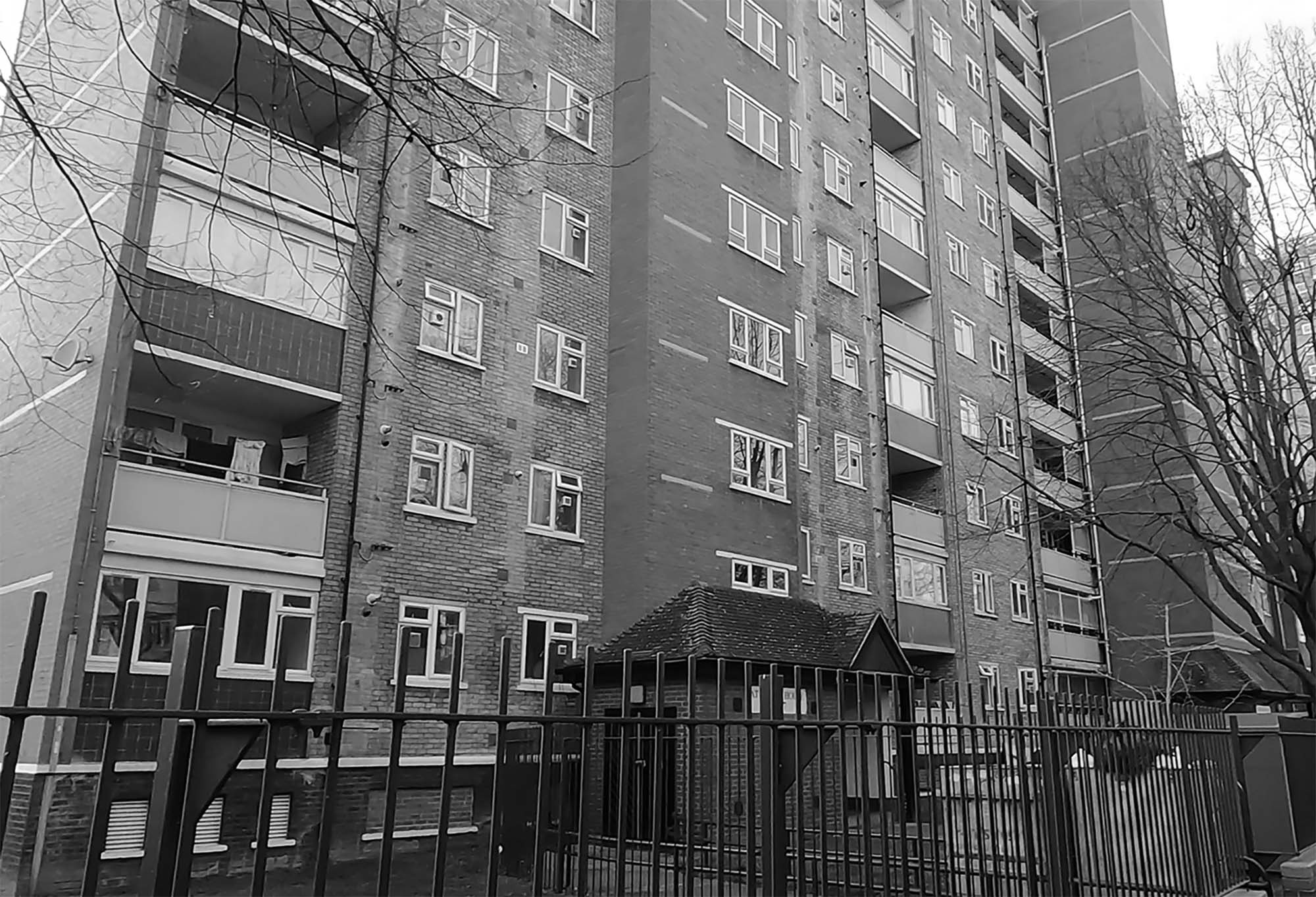

Age: 7
Sex: female
Date: 24 Jul 1984
Place: Atkinson House, Battersea Park Estate, Austin Road, Battersea, London
Leonie Darnley disappeared during a summer afternoon picnic near her home in Atkinson House, Austin Road, Battersea on 24 July 1984.
She was later found dead in a rubbish-filled basement at the flats where she lived. She was naked, except for two rags tied round her neck. Her throat had been cut and she had been sexually assaulted.
A 26-year-old labourer was tried for her murder in 1985 but acquitted. However, it was later said that there was new evidence against him, however, he died in prison in 2017.

Her body was found in the basement 6 hours after she vanished at about 10pm. The basement was noted for having been used as a doss house by vagrants. The police said:
Folowing the discovery of her body, the police said that they were looking for a cut throat razor or switch knife. They said they had searched drains, rubbish chutes and dustbins in an effort to find the murder weapon. htey said they had aleady recovered an umber of knives, but nothe one that killed Leonie Darnley.
The police said:
The police added that they thought that Leonie Darnley might herself have known her killer and that he might have lured her to her death after lurking in a lift.
Leonie Darnley and her family had lived on the sixth floor of Atkinson House. The family had been out having a picnis on the rgassy area outside the flats, and that at some point Leonie Darnley's went back to their flat to chnge her 2-year-old son, and when she returned Leonie Darnley was gone. Th poluice said that she might have followed her mother shortly after she left and met her killer enroute.
The police said:
At her inquest, her cause of death was given as haemorrhage due to a laceration.
The labourer had lived in Anson Road, Tufnell Park.
He admitted to having previously visited the estate where the murder took place, but denied murdering Leonie Darnley.
At the trial it was heard that ginger hairs from him were found in Leonie Darnley's dark curls.
The prosecution said they also matched jacket fibres
However, the defence said that the labourer had not been identified as being at the scene and that he had co-operated and that there were other suspects.
After the labourer was acquitted of murder at the Old Bailey on 1 November 1986, it was disclosed to the jury that he had admitted a string of rape attacks and was to be sentenced that day for three rapes, an attempted rape and two indecent assaults. The details were:
The police revealed that he had carried around an innocent looking sports-bag that contained a hammer, knife, torch, mask, wig, womens tights, gags and ligatures, A-Z map and train maps and had calculatingly recoinnoitred areas of London and later returned to attack defenceless women at random. The police said that his last victim had been a 15-year-old schoolgirl that had been walking near Totterridge Common in North London.
It wa also heard that he would plan his sex attacks with near military precision, and go to great lengths to ensure that he left no clues when he carried out an attack, including stripping naked before an assault to prevent fluff or fibres from his clothes attaching to his victims. It was nted that his obsession nearly proved his undoing when, shortly befroe an indecent assault on 14 September 1984, a group of local youths saw him stalking the walkway of some flats on the Doddington Estate wearing just a hat. THe youths, thinking it had been a prank searched for his clothes and stole his trousers, but the labourer found another pair and escaped.
The police said that he went to great lengths to make sure that none of his attacks took place near to where he livedin Anson Road, Tuffenl Park.
When the crimes disclosed, the judge explained that the very serious offences had been kept secret from them because to disclose them might have prejudiced their decision on the murder charge.
He then congratulated the jury on doing their job well, and noted that it had been an emotive issue where the evidence was not particularly strong.
The labourer was given three life sentences for rape and was later sent to Broadmoor where he died on 6 October 2016 after refusing more chemotherapy for his cancer.
see National Archives - J 267/994
see BUFVC
see Dailymail
see The Sun
see The Times, Tuesday, Dec 24, 1985; pg. 2; Issue 62329; col F, Girl's killer 'could be prisoner'
see Wolverhampton Express and Star - Tuesday 11 March 1986
see Dundee Evening Telegraph - Tuesday 11 March 1986
see Birmingham News - Thursday 13 March 1986
see Sandwell Evening Mail - Tuesday 11 March 1986
see Daily Express - Wednesday 12 March 1986
see Irish Independent - Tuesday 11 March 1986
see Liverpool Echo - Friday 27 July 1984
see Liverpool Daily Post (Welsh Edition) - Friday 27 July 1984
see Liverpool Daily Post (Welsh Edition) - Thursday 27 February 1986
see Newcastle Journal - Monday 30 July 1984
see Daily Express - Saturday 01 November 1986
see Liverpool Daily Post - Tuesday 24 December 1985
see Daily Mirror - Friday 27 July 1984